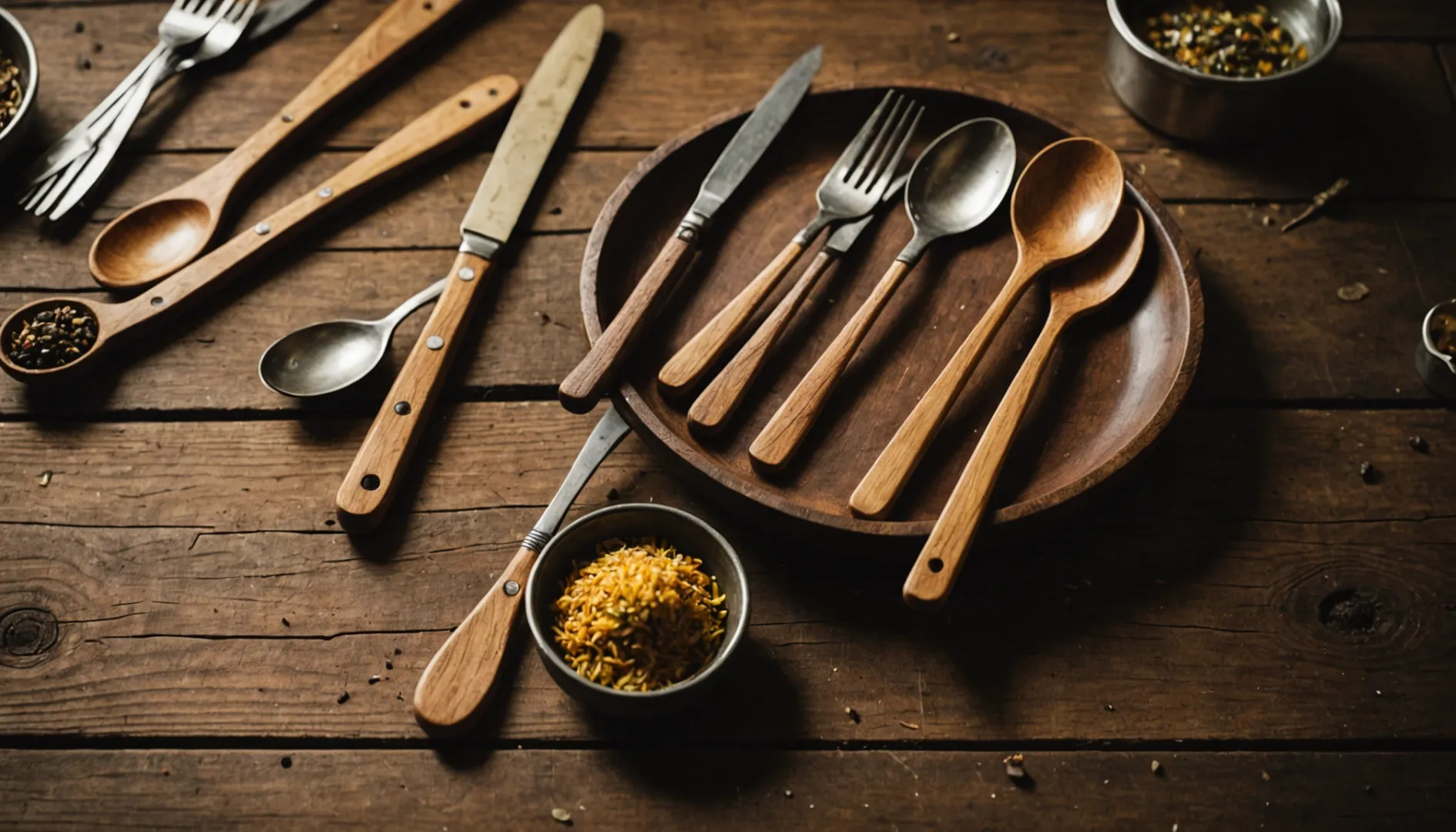
Ever thought about the flip side of using disposable wooden cutlery?
Disposable wooden cutlery can harbor bacteria due to its porous surface, face durability issues, and have environmental impacts linked to resource use. While more sustainable than plastic, it requires diligent care to prevent warping and contamination.
I've always been fascinated by the promise of eco-friendly products like disposable wooden cutlery. Yet, I've learned that while these utensils seem like a dream for reducing plastic waste, they come with their own set of quirks. They're prone to bacterial growth if not properly maintained, which can be a bit unsettling when you're trying to enjoy a meal. Plus, their durability isn't always guaranteed; I've had my fair share of broken forks at picnics. It's essential to consider these factors to make informed choices about cutlery. Let's dive deeper into these challenges and see how they stack up against other materials.
Wooden cutlery is less durable than plastic cutlery.False
Properly maintained wooden cutlery can be quite durable, lasting years.
Wooden cutlery requires regular maintenance to prevent bacteria.True
Due to its porous nature, wooden cutlery needs regular oiling and drying.
How Does Wooden Cutlery Impact Hygiene?
You know, I've always loved the charm of wooden cutlery—it's eco-friendly and just feels right. But how does it stand up to the hygiene test?
Wooden cutlery, while charming and eco-friendly, can impact hygiene due to its porous nature, which might harbor bacteria. However, with proper care—like applying natural oils and ensuring thorough drying—these risks can be minimized. Opting for high-quality utensils with food-safe finishes boosts both hygiene and durability.
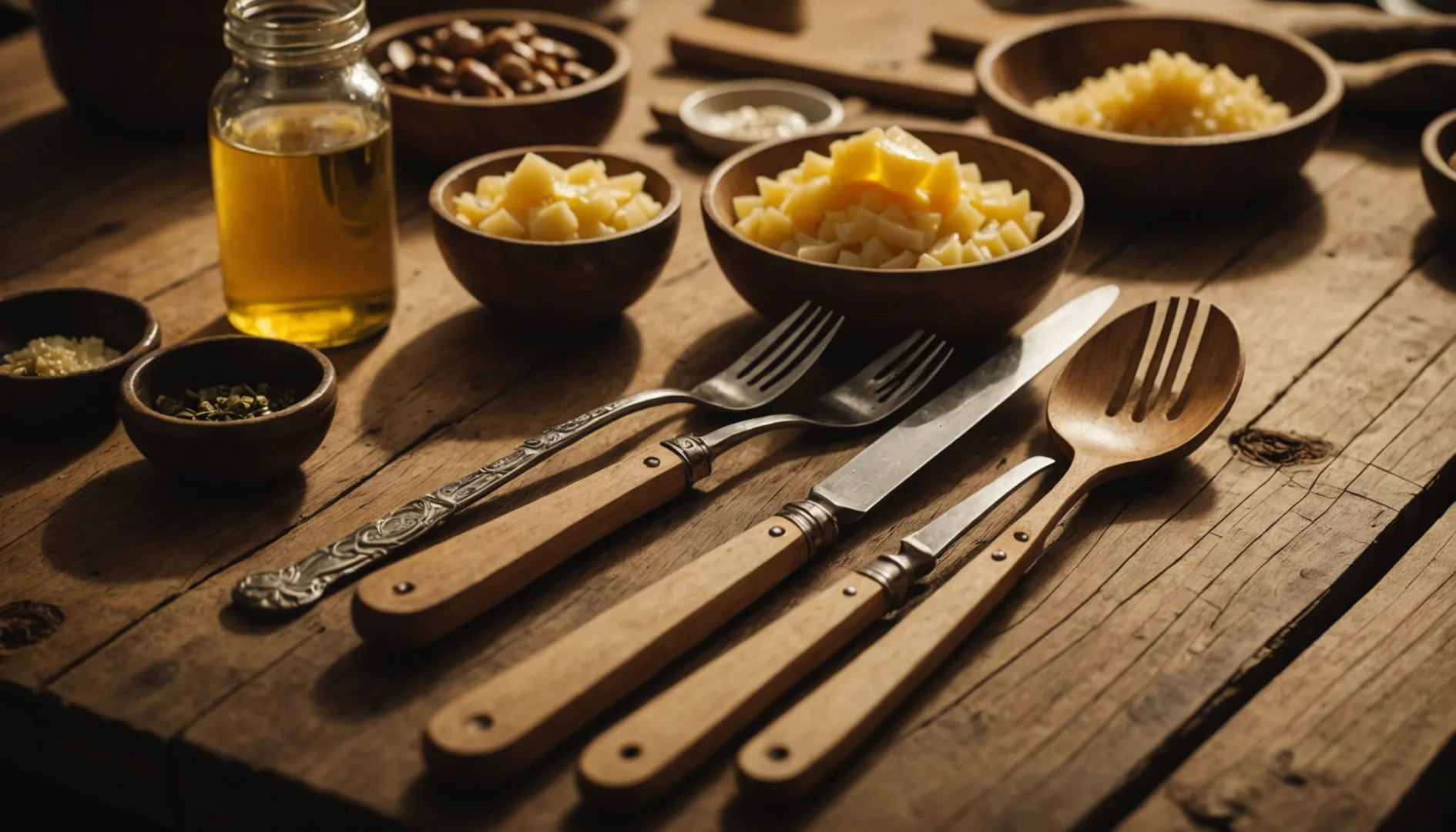
The Porous Nature of Wood
I remember the first time I swapped my usual plastic utensils for wooden ones—it felt like a small but significant step towards a more sustainable lifestyle. However, I soon discovered that wooden cutlery isn't just about aesthetics. Its porous nature poses a unique challenge for hygiene. Unlike plastic or metal, wood can absorb moisture, which can be a breeding ground for bacteria. But don't worry; this doesn't make wooden utensils inherently unhygienic. Many manufacturers apply natural coatings, like beeswax or plant oils, creating a barrier against moisture and bacteria. Over time, these coatings might wear off, so it's essential to recondition them regularly to maintain their protective qualities.
Understanding the role of these coatings is crucial for maintaining hygiene. For instance, a well-oiled utensil not only repels water but also maintains the wood's structural integrity, reducing the risk of cracks where bacteria could reside.
Maintenance Practices for Better Hygiene
Maintaining wooden cutlery is crucial for hygiene and longevity. From my experience, regular cleaning with mild soap and warm water works wonders, but be sure to avoid soaking them—prolonged water exposure can lead to swelling and cracking. Additionally, high heat can dry out the wood, causing similar issues. One of my go-to practices is drying my wooden utensils thoroughly after washing to prevent moisture retention.
Reconditioning with oils not only keeps the protective finish intact but also prevents bacterial buildup. These simple practices have not only kept my utensils hygienic but have also extended their lifespan, making wooden cutlery a sustainable option for dining.
Design and Material Considerations
I've always been fascinated by the different designs and materials available in wooden cutlery. Hardwoods like maple and oak are particularly appealing for their durability and resistance to wear and moisture. They offer a refined finish, perfect for someone like me who values both aesthetics and functionality. However, it's important to ensure that no harmful chemicals are used during production as they could compromise both safety and sustainability.
Some innovative approaches, such as using bamboo fiber combinations, aim to improve strength while maintaining biodegradability. Understanding these material choices has helped me select cutlery that aligns with my hygiene priorities1 and environmental values.
Importance of Food-Safe Certifications
When I first started paying attention to food-safe certifications like FDA and LFGB, it brought me peace of mind knowing that my utensils were manufactured with safety in mind. These certifications assure that wooden cutlery is safe for food contact. As someone who prioritizes eco-conscious choices, knowing about additional certifications that verify sustainable sourcing is a bonus.
Understanding the certifications associated with a product provides peace of mind regarding its hygienic use2. This transparency is becoming increasingly important as we all become more aware of the origins of products and their impact on our health and the environment.
Wooden cutlery is more hygienic than plastic.False
Wooden cutlery can absorb moisture, fostering bacteria growth if not maintained.
Wooden cutlery decomposes faster than plastic.True
Wooden utensils are biodegradable, breaking down quicker than plastic.
Is Wooden Cutlery Durable Enough for Everyday Use?
Ever thought about swapping out your cutlery for something more sustainable? Wooden cutlery might just be the eco-friendly hero you need, but can it really hold up to everyday dining?
Yes, wooden cutlery can be durable enough for daily use, provided it's well cared for. Regular oiling and hand washing are key to preventing cracks and maintaining its integrity. While not as indestructible as metal, with proper maintenance, wooden utensils offer a sustainable alternative for daily dining needs.
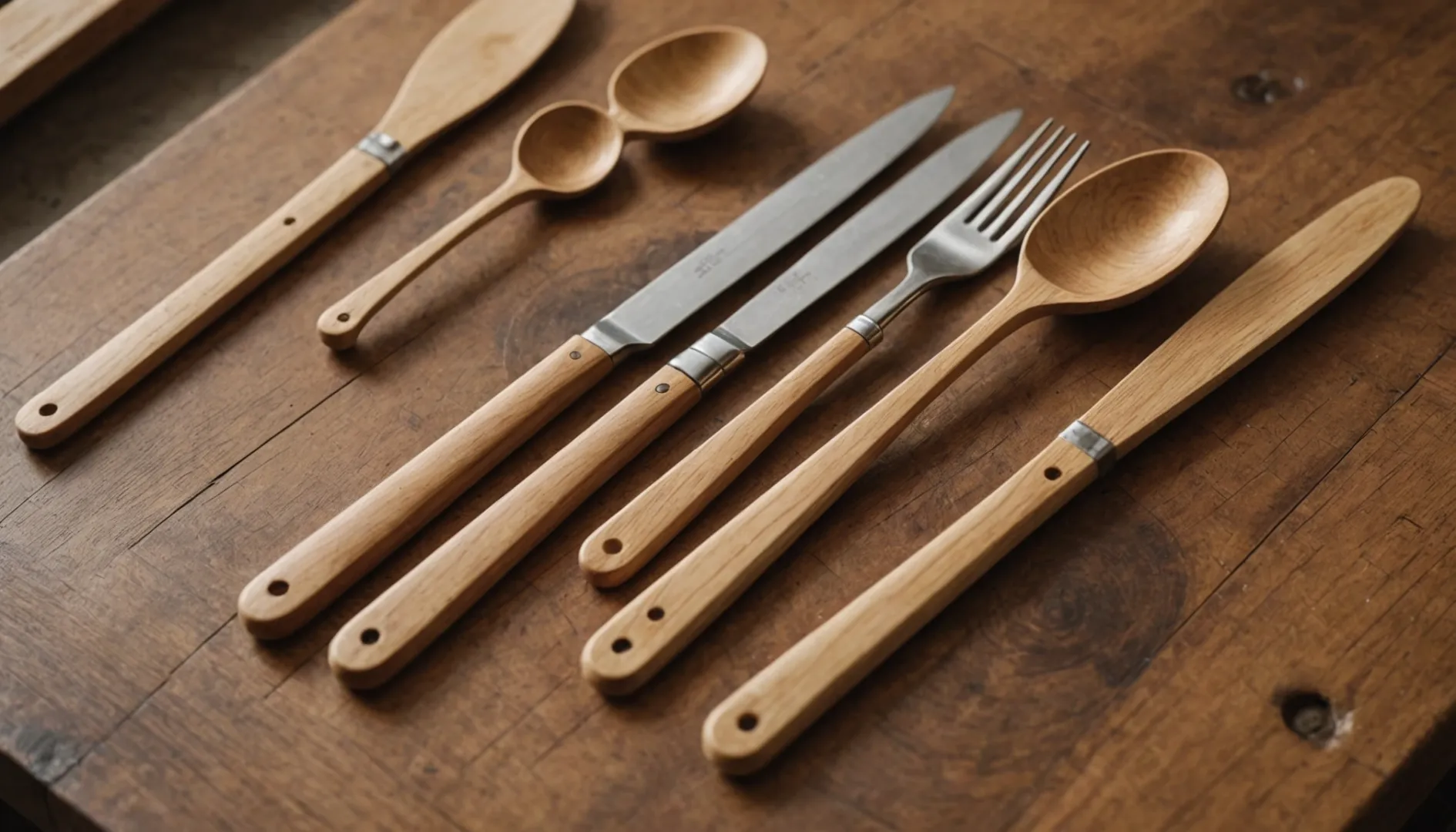
The Material Matters
When I first switched to wooden cutlery, I was curious if they could truly handle my daily kitchen adventures. Most of my wooden utensils are made from sturdy hardwoods like maple or oak, known for their resilience. It's fascinating how these woods are less prone to splintering or cracking, making them a reliable choice for day-to-day meals. Of course, quality matters—I've learned to look for well-crafted pieces that promise longevity. The durability largely depends on the quality of the wood3 used and the craftsmanship involved in creating the utensil.
Maintenance for Longevity
Maintaining wooden cutlery does require a bit of effort, but it's worth it. A friend once showed me how to apply food-safe oil or wax periodically to replenish the natural protective coating that can wear off over time. This simple ritual not only prevents them from drying out but also keeps them from cracking. Hand washing them gently with mild soap and warm water—and drying them immediately—has become a peaceful routine in my kitchen, ensuring they stay in top shape.
Design and Coatings Impact
The design of these utensils is more than just aesthetic; it plays a crucial role in their durability. Smoother finishes help in resisting moisture absorption and bacterial growth. I appreciate the natural coatings like beeswax that manufacturers use, as they enhance both the look and utility of my cutlery by creating a barrier against moisture. Whenever I choose new pieces, I make sure they have a high-quality finish that can withstand regular use without degrading.
Environmental Considerations
The eco-friendliness of wooden cutlery is a big part of why I made the switch. Unlike plastic, which haunts landfills for centuries, wooden cutlery biodegrades naturally. However, I’m mindful of where the wood comes from. Choosing cutlery sourced from responsibly managed forests and free from harmful chemicals is important to me. Eco-certifications4 provide reassurance that I'm contributing positively to our planet's health.
Everyday Usability
In terms of practicality, I've found wooden cutlery to be quite capable for most meals, though not perfect for everything. It might not slice through a steak as effortlessly as metal but works perfectly for lighter meals like salads or pasta dishes—my go-to lunches! The ergonomic design makes them comfortable to use every day, marrying function with form beautifully.
While wooden cutlery may not replace every metal utensil in my kitchen, it's certainly a durable and eco-conscious choice with proper care. It’s reassuring to know that by maintaining them well, I'm making a sustainable choice that aligns with my values.
Wooden cutlery lasts longer with regular oiling.True
Regular oiling prevents cracking and extends the lifespan of wooden cutlery.
Wooden cutlery is more heat-resistant than metal.False
Wooden cutlery is less heat-resistant than metal, which withstands higher temperatures.
What Environmental Concerns Should I Be Aware Of?
Every time I step outside, I'm reminded of the fragile beauty of our planet. But what are the pressing environmental issues we need to tackle right now?
Key environmental concerns include pollution, climate change, deforestation, and resource depletion. These issues threaten ecosystems and human health, demanding global cooperation and innovative solutions for sustainable practices.
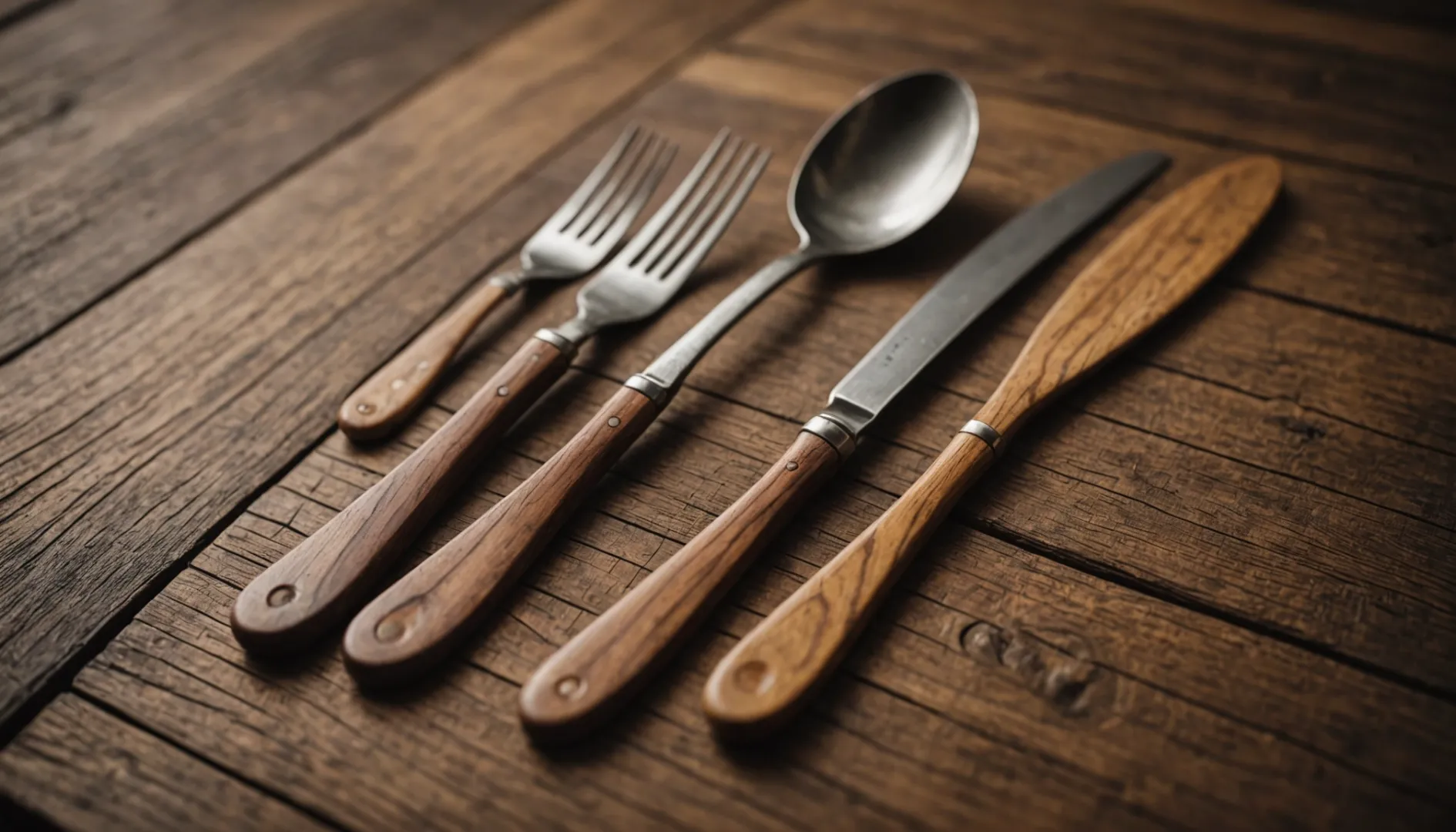
Pollution and Its Impact
I remember one summer when the air was so thick with smog it was hard to breathe. It was a wake-up call about how pollution affects our daily lives. Whether it's the air we breathe, the water we drink, or the soil that grows our food, pollution is everywhere and it's up to us to make changes.
Growing up, my family lived near a busy highway. The constant stream of cars meant that the air quality was less than ideal. I often think about how that air pollution affected not just our health but also contributed to broader climate issues. And it's not just the air. Water pollution from farms and factories can devastate aquatic life and make our drinking water unsafe. Meanwhile, soil pollution impacts food safety and agriculture. Tackling these issues means tighter regulations and embracing clean energy solutions and other sustainable practices5.
Climate Change: A Global Challenge
I once read an article about how polar bears are struggling because of climate change, and it stuck with me. Climate change isn't just a distant problem; it's something that affects biodiversity, agriculture, and our health every day. It's driven by greenhouse gases from burning fossil fuels and deforestation, which lead to warming temperatures and extreme weather. Solving this requires global teamwork through agreements like the Paris Accord and local actions focusing on renewables and reducing our carbon footprints to combat this crisis6.
Deforestation: A Threat to Biodiversity
Whenever I hear about rainforests being cleared, I think of the incredible diversity of life that’s being lost. Forests are more than just trees—they’re home to countless species. When they’re cut down for farmland or urban development, we lose valuable habitats and a vital tool in our fight against climate change. Protecting these ecosystems means supporting sustainable forestry, reforestation, and indigenous rights to maintain ecological balance7.
Resource Depletion: The Need for Sustainable Use
I always try to remind myself that our planet’s resources aren’t infinite. Overconsumption is exhausting vital materials like water, minerals, and fossil fuels. This not only harms the environment but also leads to conflicts over what remains. By embracing circular economy principles—like recycling and reusing—we can help ensure these resources are available for future generations and ensure future availability8.
Wooden cutlery is more hygienic than plastic.False
Wooden cutlery is porous and can absorb bacteria, unlike plastic.
Bamboo cutlery regenerates faster than wood.True
Bamboo grows quickly, making it more sustainable than wood.
How Does Wooden Cutlery Compare to Other Eco-Friendly Options?
Ever wondered if swapping your usual utensils for wooden cutlery is a real game-changer for the environment? Let’s dive into its pros and cons together.
Wooden cutlery stands out as an eco-friendly alternative to plastic due to its biodegradability and use of responsibly sourced wood. It compares well against bamboo and corn-based plastics, offering unique benefits like minimal environmental impact, although factors like durability and cost can vary.
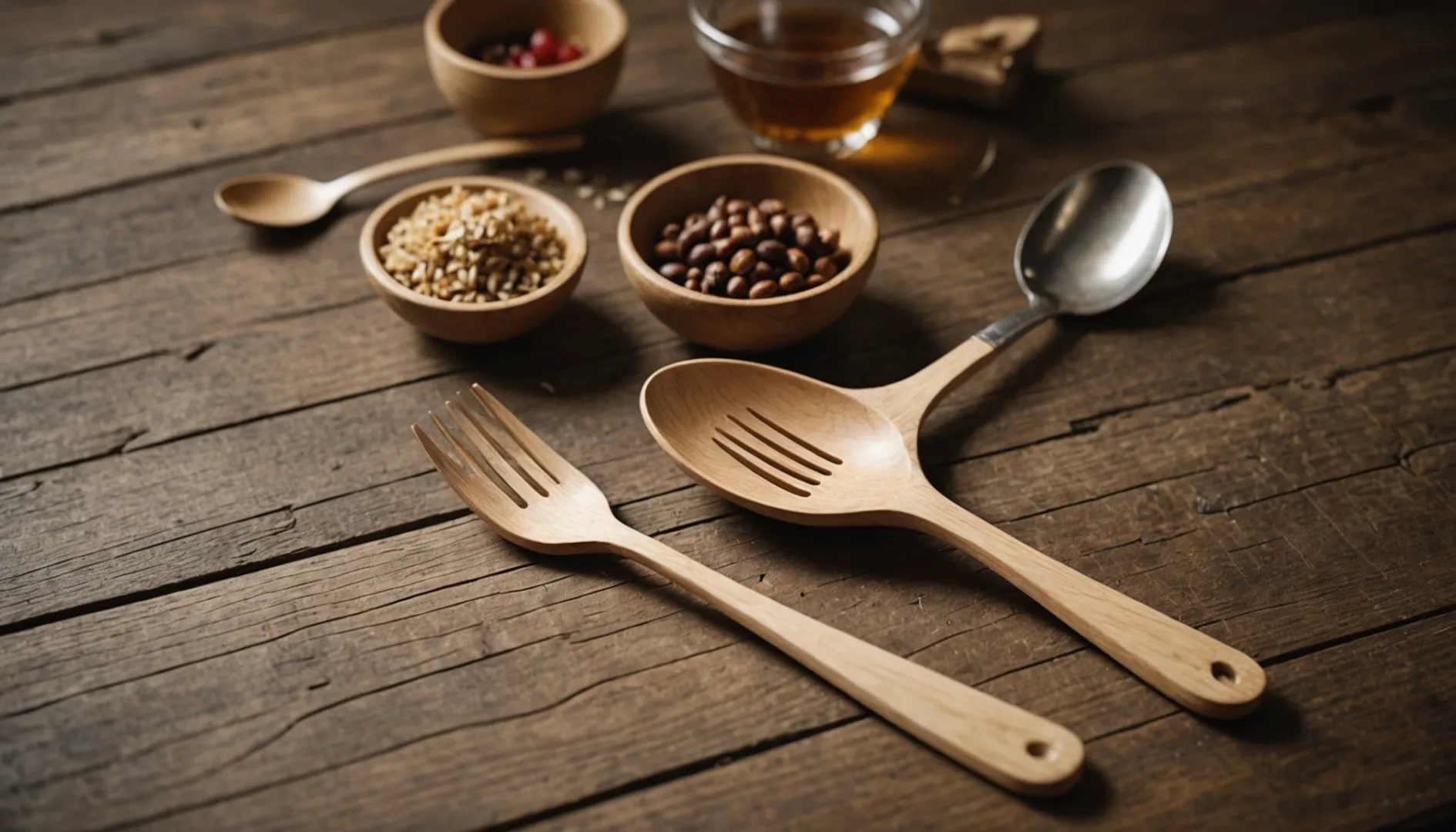
Environmental Impact
Wooden cutlery shines because it's biodegradable. Unlike those stubborn plastic forks that outlive us all, wooden utensils break down in months if composted right. I had a small compost bin at home, and seeing how quickly they disintegrated was a pleasant surprise. Bamboo, however, might have the edge here since it grows faster and requires fewer resources—like less water and no pesticides. But when I found out that my wooden spoons9 were sourced from certified forests, I felt pretty good about my choice.
Durability and Performance
One thing I noticed is that while wooden cutlery is pretty sturdy for most meals, it struggles with hot soups or stews. You can’t just leave it in hot liquid without risking some warping. Bamboo, on the other hand, is tougher and more heat-resistant. I remember trying to dig into a hot casserole with a wooden spoon—it wasn't ideal! A friend of mine swears by applying a natural beeswax coating10 on her wooden utensils to make them last longer, which is something I've been meaning to try myself.
Cost and Accessibility
When it comes to cost, I found that wooden cutlery hits the sweet spot—not too pricey, not too cheap. It’s definitely more affordable than bamboo but a bit more costly than plastic. I've noticed some of my favorite stores don’t always have bamboo options available, which makes wooden cutlery a more reliable choice when I’m shopping.
Disposal and End-of-Life
The beauty of wooden cutlery is how it gracefully bows out at the end of its life. It's usually compostable, which aligns perfectly with my efforts to live a zero-waste lifestyle. Bamboo is similar in this regard, though even less impactful due to its rapid renewability. The only hiccup is corn-based plastics—they need industrial composting facilities, which aren’t always accessible.
In conclusion, while wooden cutlery11 certainly has its perks—mainly being eco-friendly and relatively affordable—it’s important to weigh these against other options like bamboo or corn-based plastics depending on what matters most to you: sustainability, cost, or performance.
Wooden cutlery requires regular oiling to maintain hygiene.True
Oiling prevents moisture absorption and bacterial growth, enhancing longevity.
Plastic cutlery is more biodegradable than wooden cutlery.False
Plastic takes centuries to decompose, while wooden cutlery is biodegradable.
Conclusion
Disposable wooden cutlery, while eco-friendly, poses hygiene risks due to its porous nature. Proper maintenance is essential to prevent bacterial growth and ensure durability.
-
Discover comprehensive hygiene comparisons between wooden and other cutlery types. ↩
-
Learn about essential certifications ensuring safe use of wooden utensils. ↩
-
Learn about woods that provide superior strength and longevity. ↩
-
Identify certifications ensuring responsible sourcing and manufacturing. ↩
-
Learn about pollution's impact on ecosystems and potential solutions. ↩
-
Explore how climate change influences global biodiversity. ↩
-
Understand the effects of deforestation on biodiversity. ↩
-
Discover how circular economy principles aid in resource conservation. ↩
-
Learn about sustainable sourcing practices for eco-friendly dining. ↩
-
Discover how natural coatings enhance wooden utensils' durability. ↩
-
Find tips for selecting sustainable utensils for your needs. ↩

